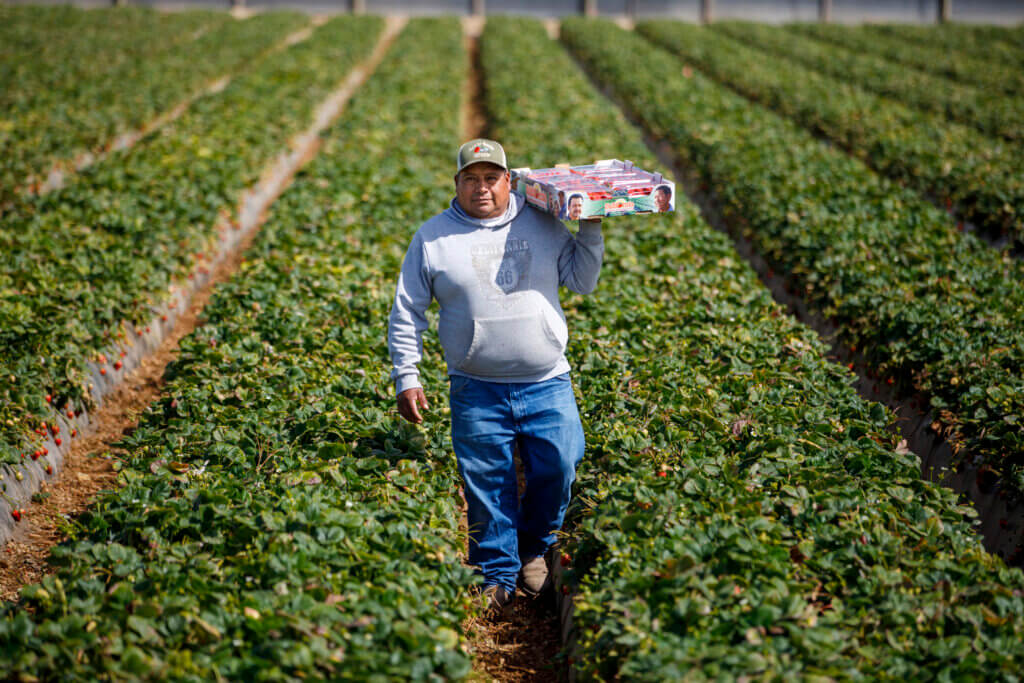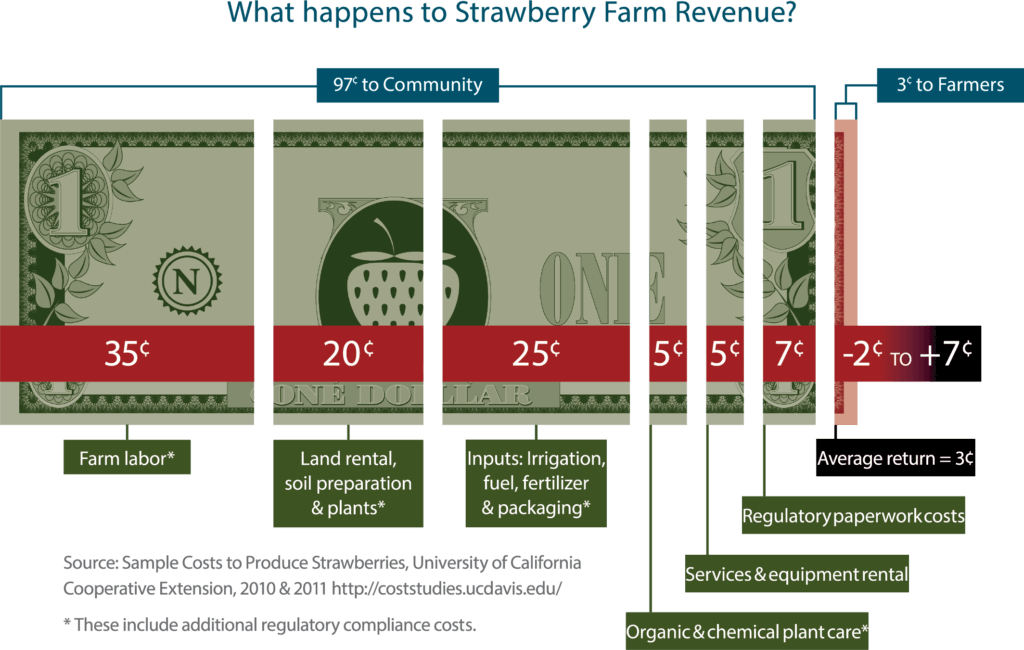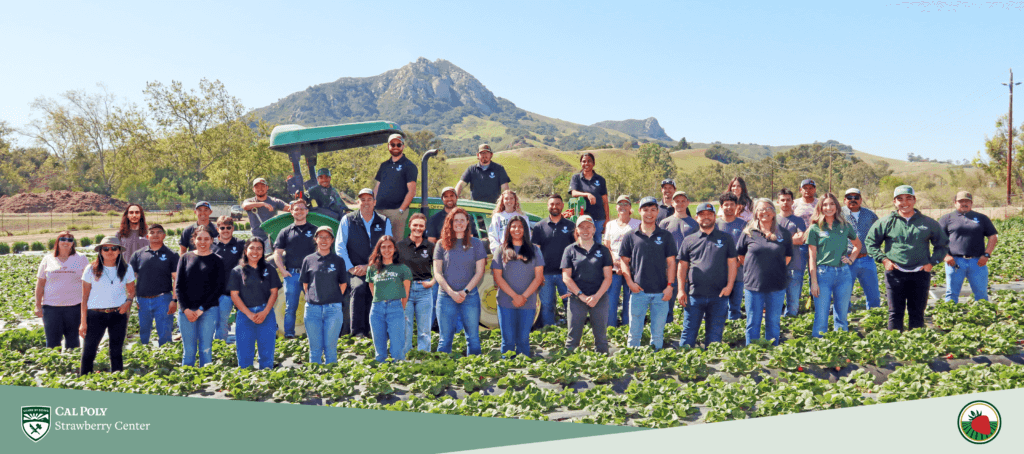Growing strawberries is as much about the people behind them as it is the fruit itself.


California strawberries are the crop of opportunity
California strawberries are considered the crop of opportunity. California strawberries cultivate opportunities for Latinos and generations of immigrants coming to the U.S. in pursuit of the American Dream. Most strawberry farmers live and work in the communities where they farm – so protecting the health of the people, the land and environmental stewardship is their top priority.
Strawberry fields have historically provided opportunities for field workers to advance to management positions and even farm ownership. Almost half of California strawberry farmers started out as field workers and more than 75% of the strawberry workforce, including management and field workers, are Latino.

97 cents of every farm dollar goes back into the community

More than 3,000 employees are trained annually through regular workshops and events for farmers, ranch managers and crew supervisors. These workshops provide continuing education and skills development for strawberry farming’s mid-level management workers.
Educating the Next Generation

California strawberry farmers lead the world in environmental research dedicated to reducing pesticide use. In 2013, the Strawberry Center, a partnership between the California Strawberry Commission and Cal Poly University, San Luis Obispo, was created to increase the sustainability of the California strawberry industry through research and education that addresses industry needs.
In addition to its innovation and research, the Strawberry Center provides job and work experience. More than 110 students have received industry-related work experience and 40 have landed paid internships. These students’ real-world experiences are then brought back to their communities where they are able to contribute on farms, research labs and sales offices.
TERMS AND CONDITIONS • PRIVACY • CONTACT • SCHOLARSHIP PROGRAM • INDUSTRY & TRADE • EN ESPAÑOL • Powered by Team of Horses • ©2010-2024 California Strawberry Commission. All Rights Reserved.
